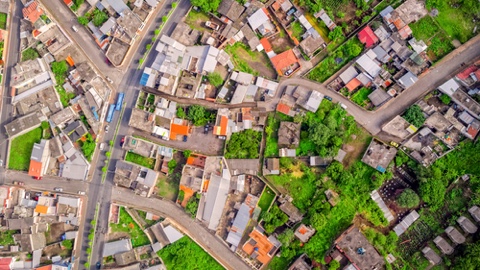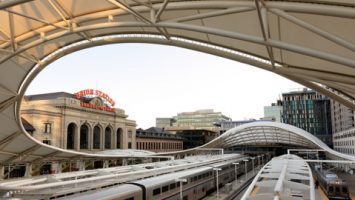
Cities around the world are making use of space that has often been ignored in the past – the urban rooftop. Steven Peck of Green Roofs for Healthy Cities states, “The roofscapes of our cities are the last urban frontier—from 15 percent to 35 percent of the total land area.”
Green roofs involve water-proofing, a root repellent system, drainage system, filter cloth, a lightweight growing medium, and plants. Not only attractive, they also can reduce storm water runoff, lower cooling costs, improved air quality, and combat the urban heat island effect. They can be used as community gardens for local food production – a great benefit to residents in urban food deserts, reducing transport costs, and creating e a more bio-diverse ecosystem in cities. Green roofs can also benefit the building – a study by the National Research Council of Canada found that an extensive green roof reduced the daily energy demand for air conditioning in the summer by over 75%.
Architects are experimenting with small homes that could be built on roofs. The Antepavilion Commission runs an annual competition of an experimental rooftop architectural structures, stressing innovative and alternative ways of living within the city, and the use of recycled materials. Wasted roof space can also be used as recreational areas, such as running tracks, tennis courts, etc.
Roofs can be an optimal way to harvest rainwater, retaining storm water runoff, reducing pollution, and reusing rainfall. While not fit for drinking water, harvested rainwater can be used for other purposes like yard watering and toilet flushing. In 2011, the City of Philadelphia introduced the ‘Green City, Clean Waters’ program aimed to reduce combined sewer overflows (CSOs) and storm water runoff by expanding existing storm water charges together with incentives to collect and reduce runoffs. Property owners now pay for the amount of runoff that each property generates, based on the amount of existing impervious surface. By turning more of their property green, landowners can reduce the percentage of impervious surface and see their storm water charge go down.


